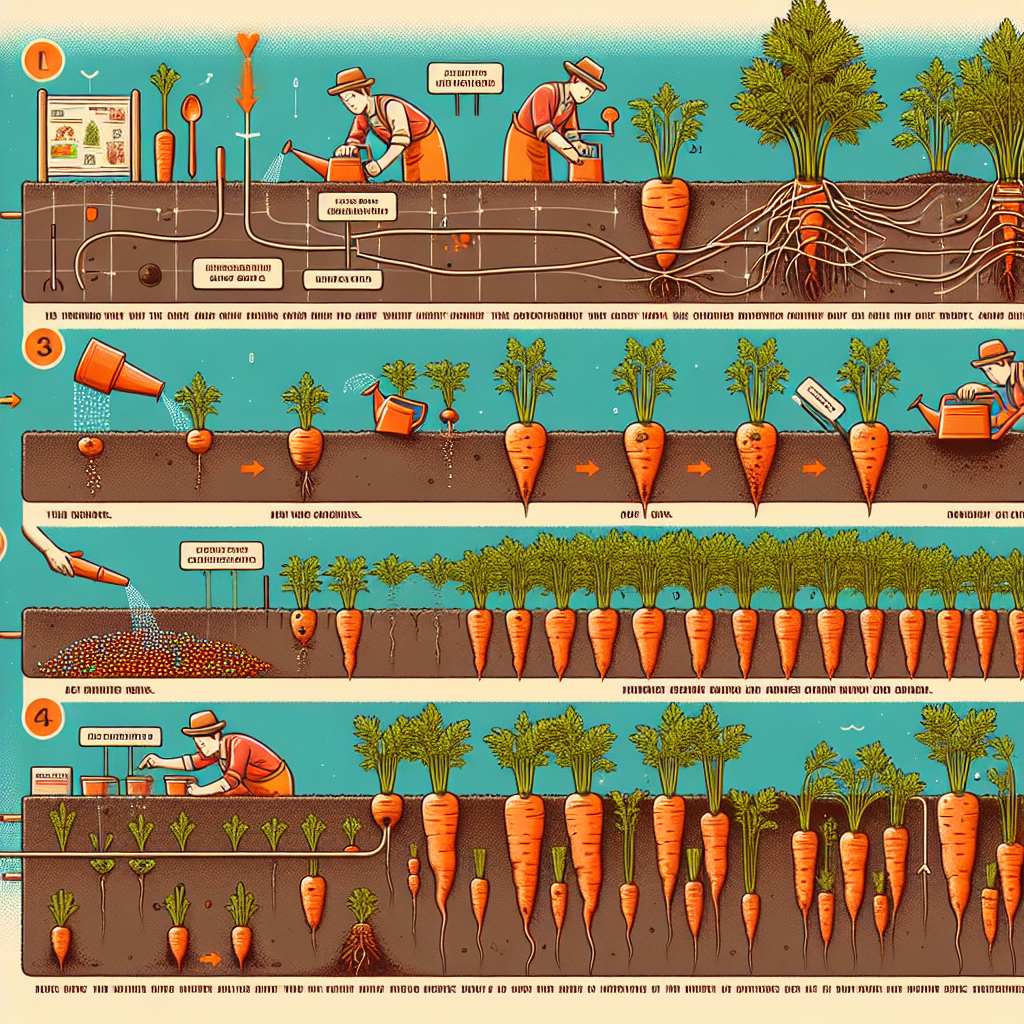
How to plant and grow carrots
How to Plant and Grow Carrots: A Comprehensive Guide
If you're looking to add a nutritious and versatile vegetable to your garden, carrots are an excellent choice. Not only are they easy to grow, but they also provide a wealth of benefits, from their rich flavor to their nutritional value. In this guide, we'll explore everything you need to know about how to plant and grow carrots successfully, ensuring a bountiful harvest.
Understanding Carrots
Before diving into the planting process, it's important to understand a bit about carrots, including their types, benefits, and ideal growing conditions.
- Types of Carrots: Carrots come in various colors and shapes, including orange, purple, yellow, and white. The most common type is the orange carrot, but diversifying your garden with multiple varieties can be exciting!
- Nutritional Benefits: Carrots are rich in beta-carotene, antioxidants, vitamins, and minerals. They promote good vision, skin health, and may even lower the risk of chronic diseases.
- Growing Conditions: Carrots thrive in sandy, well-drained soil that is rich in organic matter. They prefer full sun but can tolerate partial shade. The ideal soil temperature for planting is between 55°F and 75°F (13°C to 24°C).
Preparing Your Garden Bed
Creating the right environment for your carrot seeds is crucial for a successful harvest. Here's how to prepare your garden bed:
- Choose the Right Location: Select a spot that receives full sun for most of the day.
- Test Your Soil: Use a soil test kit to determine pH and nutrient levels. Carrots prefer a pH between 6.0 and 6.8.
- Amend the Soil: Add organic matter such as compost or well-rotted manure to improve soil quality and drainage.
- Till and Loosen the Soil: Use a garden fork or rototiller to break up compacted soil, allowing carrot roots to grow freely.
Sowing Carrot Seeds
Now that your garden bed is ready, it's time to plant your carrot seeds. Follow these steps for optimal results:
- Timing: Depending on your climate zone, sow carrot seeds either in early spring or late summer for a fall harvest. Aim for 2-4 weeks before the last frost in spring.
- Seed Depth: Sow carrot seeds about ¼ to ½ inch deep and 2-3 inches apart in rows spaced 12-18 inches apart.
- Watering: Water the area immediately after sowing to keep the soil moist, but not saturated.
“Growing carrots is not just about planting seeds; it's about nurturing them to create a nutritious food source.”
Caring for Your Carrot Plants
Once your carrots are sown, proper care will help them thrive. Here are some essential care tips:
- Watering: Carrots need consistent moisture, especially during dry periods. Aim for about an inch of water per week, either from rain or supplemental watering.
- Weed Control: Keep the area weed-free to reduce competition for nutrients. Use mulch to suppress weeds and retain soil moisture.
- Thinning: Once seedlings are about 2 inches tall, thin them to 1-2 inches apart to give each carrot enough space to develop.
- Pest Management: Keep an eye out for pests such as carrot flies and aphids. Use organic pest control methods like neem oil or insecticidal soap to protect your plants.
Fertilizing Carrots
Although carrots are relatively low-maintenance, providing them with the right nutrients will enhance growth:
- Initial Fertilization: When preparing your garden bed, mix in a slow-release organic fertilizer to provide necessary nutrients.
- Top Dressing: After seedlings emerge and are thinned, you can apply a side dressing of balanced fertilizer if growth appears slow.
Harvesting Carrots
It's finally time to enjoy the fruits of your labor! Harvesting carrots can be done at various stages:
- Baby Carrots: If you prefer immature carrots, harvest them when they are about 1-2 inches in diameter, typically 30-60 days after planting.
- Mature Carrots: For full-sized carrots, wait until they are 1-2 inches in diameter, usually 70-80 days after sowing.
To harvest, gently loosen the soil around the carrot with a fork or shovel and pull them out by the greens. Avoid pulling directly on the tops as this may damage the carrot’s neck.
Storing Carrots
After harvesting, proper storage will prolong the freshness of your carrots:
- Cleaning: Remove any excess soil and trim the tops to about an inch. Avoid washing them until you're ready to use them, as moisture can lead to rot.
- Storage Conditions: Store your carrots in a cool, dark place, ideally between 32°F and 40°F (0°C to 4°C) with high humidity. A refrigerator crisper drawer works well.
- Long-Term Storage: Carrots can also be blanched and frozen for long-term storage.
Troubleshooting Common Carrot Issues
Like any other plants, carrots can encounter problems during their growth. Here are some common issues and solutions:
- Forked Carrots: This may occur due to compacted soil or irregular watering. Ensure that the soil is well-tilled and consistently moistened.
- Blossoming Carrots: If your carrots start to bolt (flower), it often means they were stressed by temperature changes. Plant your seeds at the right times to avoid this.
- Pests and Diseases: Regularly inspect your plants for pests and diseases like powdery mildew. Removing infected plants and applying appropriate treatment can mitigate these issues.
Conclusion: Enjoy Your Carrot Harvest!
Growing carrots can be a rewarding experience, offering not only fresh produce but also satisfaction in your gardening skills. By following the outlined steps on how to plant and grow carrots and providing them with the necessary care, you will be well on your way to enjoying homegrown carrots in your meals.
Whether you're a seasoned gardener or a beginner, carrots are accessible and a perfect addition to any garden. Roll up your sleeves, get your hands in the soil, and enjoy the journey of growing these vibrant vegetables!
By Guest, Published on August 13th, 2024